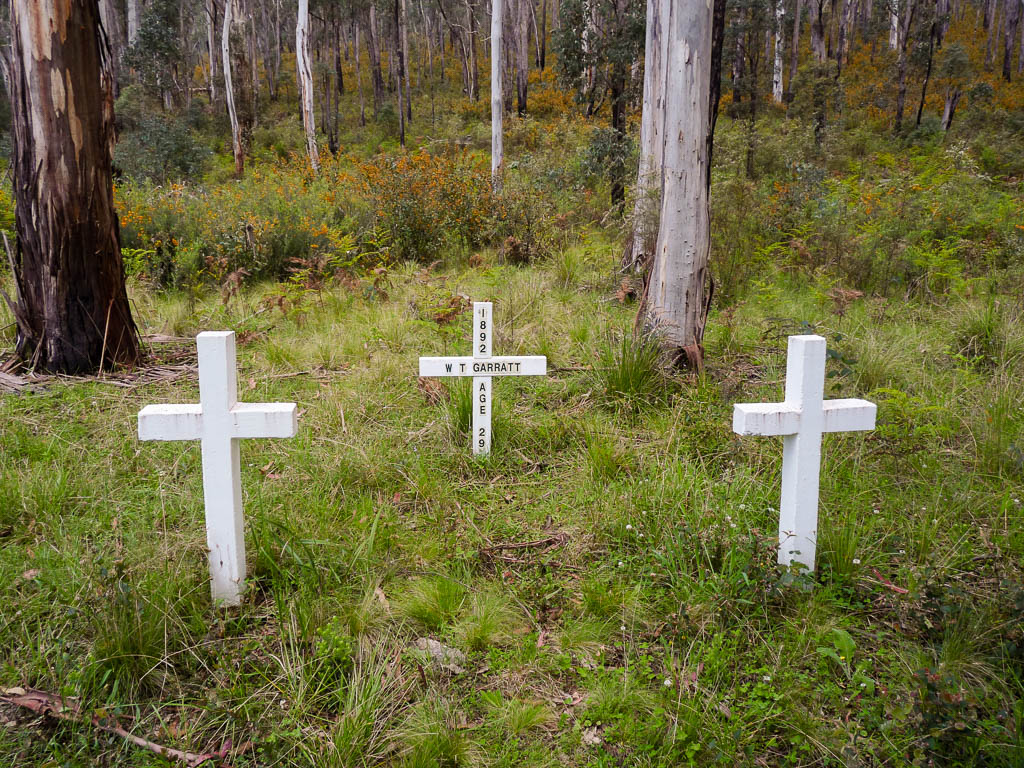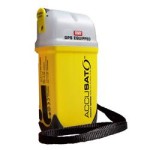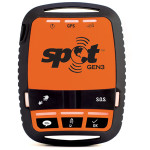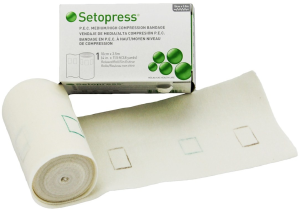The recent close call of a prospector who got lost in Tasmania’s west coast is a good wake-up call to sit down and think about your safety plans when you go out in the bush.
A lot of safety planning is just common sense, but there are a few things you can do to minimise your risk, especially if you go out on your own. Here’s a list of the main things I do when preparing for a trip, as well as during the trip.
Let someone know where you’re going
This one should be self-evident, but I’ve even forgotten to do it myself sometimes. Make sure you have a designated contact who knows where you’re going, and when you’re expected to be back. I leave my partner with a list of locations I’m going to, preferably a map. If I fail to turn up she’ll have a good idea where to tell the Police I’m likely to be.
Take an emergency Personal Locator Beacon (PLB)
Nowadays (mid-2016) you can hire a PLB from Parks and Wildlife for $40 per week. You can also buy one outright for places like Johnny Appleseed for under $300. They might seem expensive, and they are… until they save your life. I use an alternative called a SPOT Tracker. Unlike a true PLB, which can only be used to signal an emergency, the SPOT Tracker has a GPS and a messenger that uses the phone satellite network. It can be used to do several handy things: relay your position every few minutes, check-in at designated times to let your contacts know all is well, and send non-emergency help signals and custom messages.
The main disadvantage of a SPOT Tracker compared to a true PLB is that the PLBs are registered in Australia (so a rescue might kick-off more quickly), and act as a signal beacon so rescuers can home in on you. PLBs are made to do a single job (get rescuers to you), and they do it extremely well. On the other hand the SPOT device relies on the telephone satellite network, which in my opinion is not as reliable.
All types of PLBs suffer from a fatal flaw, in my opinion. If you’re out prospecting, particularly out west, they can have difficulty seeing the satellites when you’re in dense bush, or in a deep gully. If you fall over and pass out, you’re not able to hit the HELP button. If you fell into a mine shaft or deep pit, the chances of the device being able to see the satellites and get out a call for help are pretty slim. I guess you could set off the signal and then try to toss the device out of the hole so it can see the sky? In any case, I think the tracker has an advantage, in that your last known position to a few minutes before you got in trouble can be checked, if you fail to check in, and rescuers will know with pretty good accuracy where to start looking.
Have a designated call-in plan
If you’re going somewhere with mobile reception, then have a designated call-in schedule. I call or text my partner at lunchtime every day that I’m out, and again when I get back to camp for the evening. I’m not sure whether to be happy or sad about it, but more and more places in the middle of nowhere have mobile reception. I was recently doing field-work on the top of Mt Bertha (in the middle of the Tarkine), a few days walk from the nearest road, and I had 4 bars of reception.
No matter how good mobile coverage gets, there’s a lot of remote Tasmania that’s unlikely to ever get a signal. I always take my SPOT device when I’m out bush, and I use it for two designated call-ins. Because signal can be flaky in challenging terrain, my partner knows to call for help if I miss two consecutive call-ins, as there’s a chance that one message might not make it out.
Take a first aid kit
This is another bit of kit that can seem too expensive, bulky and/or heavy, till one day you need it and you don’t have it. Still, I think it’s well-worth packing a purpose-made first-aid kit for prospecting. I have a home-assembled kit that fits inside a 1L Sistema container (lunch box size). It has things like band-aids, bandages, a Setopress snake bandage, iodine disinfectant, scissors, sutures, saline, etc.
While on the topic of Setopress bandages, if you haven’t used one before, I reckon they’re much better than a regular compression bandage, but expensive. They have rectangles printed on them. As you apply the bandage, you put enough tension in it to stretch the rectangles into squares, and you know you’re applying the right amount of pressure for a snakebite or heavy bleeding.
General safety
There are probably other things you can do yourself to improve your safety in the bush, and they’ll be different for everyone. I take a GPS and spare batteries everywhere I go, because I’ve been caught out by the fog several times. Always carry plenty of water, and weatherproof clothes. If you’re on the west coast, particularly, the weather can change pretty bloody fast. I’ve seen it go from 30+ degrees to snowing in less than two hours, in the middle of summer. Carry a set of dry clothes inside a drybag. It’s amazing how quickly you can get drenched and chilled when it turns wet. If you’re going somewhere where you need to cross a sizable river, pay attention to the weather. You can easily get flooded out on the wrong side of the river. Trying to cross flooded rivers is a common way for people to drown.
Do you have any pointers, or things you do to improve your safety? You can share on the comments below! If you like the content at Apple Isle Prospector, feel free to get in contact, or leave a comment. If you enjoyed this article, then let others know by sharing it on Facebook or liking our Facebook or Twitter pages:





Good points there.
Like you I use a Spot tracker and send a message when I’m leaving the vehicle and when I’m OK and back at the vehicle to start for home. The third message is “Please come or send help to my location.” And of course the fourth message is SOS. I usually set the tracking mode on.
Because of jack-jumper allergy I also carry an Epipen in my kit. It’s surprising how many can climb up your legs before they all start to bite at once.
Those Setopress bandages sound good. I’ll be getting some.
That’s a great point John, and like so many things it seems so logical I forgot to mention it. Essential medications should be in your first aid kit.
I really enjoy the SPOT. We used to have at work a satellite phone the size (and weight) of a brick, so people tended not to take it, and besides it never worked reliably. What’s the point of having safety gear you don’t take with you, or taking safety gear you can’t rely on?
I went straight out and bought a bought a Setopress bandage, its a fine line between to much pressure & not enough, this will solve that problem, thanks Migel
Helen May
Hi Helen,
That’s great! I came across them while doing a first air course a few years ago, and have had them in my work kit for a while. A couple of years ago I also bought my own for my first aid kit. I like that they’re long enough to do a full leg and you don’t have to worry about whether you’re applying too much pressure and might cut off the circulation.
Cheers!